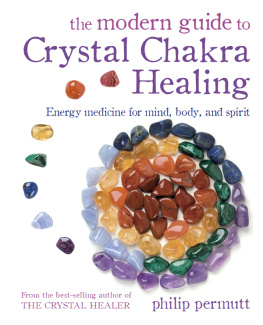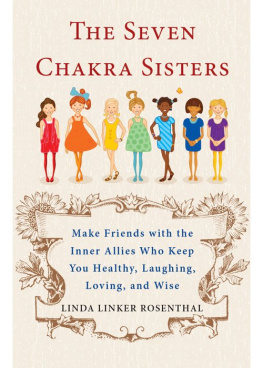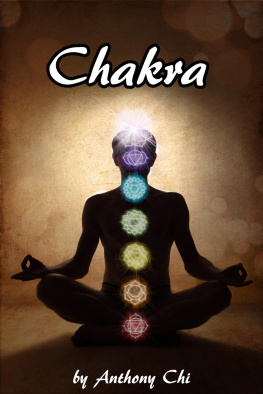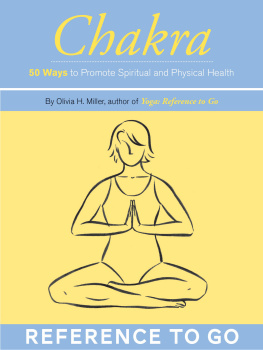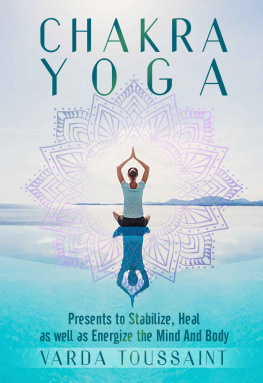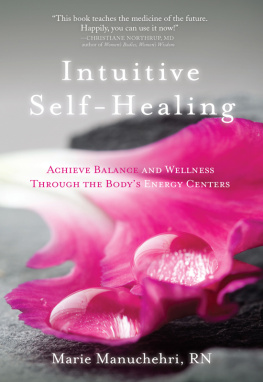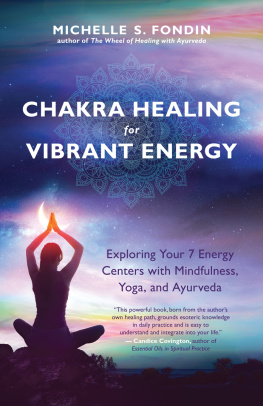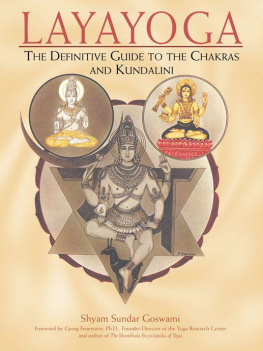INTRODUCTION
This book describes and explains how you can work with and balance the seven major chakras or spinning wheels of energy in the body. I first discovered the chakra system through my practice of yoga. I was very fortunate to find an Indian teacher who, I later learnt, had devoted most of his life to the study and practice of yoga. He not only taught us the classical postures of yoga (asanas) and breathing exercises (pranayama), some of which are described in this book, but also introduced us to the spiritual aspect of yoga laid down by the Eastern sage Patanjali. Included with this was information on the aura and chakra system. At the time this fascinated me but also provoked an element of disbelief. I had been brought up in the Christian faith and was still attending and working for the church; therefore any teachings that did not comply with the churchs dogma were definitely suspect to me. When I reflect back I laugh at my narrow-mindedness and rigidity and am so grateful that I was gently encouraged to remove my blinkers of conditioning.
Although no longer a church-goer, I still believe that Christ was a realized being alongside other realized beings such as the Buddha and Paramahansa Yogananda. I believe that all religions lead to the ultimate reality of God consciousness and people should choose to follow whichever religion is right for them. Truth is not solely Hindu nor Muslim, Buddhist nor Christian. The follower of truth walks on the path of light, peace, wisdom, power and bliss. The philosophy and practices of yoga are a discipline without dogma and based on truth, and can therefore embrace all religions.
THE ETERNAL TRUTHS
It is believed that the truths contained in all religions are derived from the Vedas, the oldest books upon which the Hindu religion is based. The word veda means knowledge, and when applied to scripture it signifies a book of knowledge. The Vedas are the eternal truths revealed by God to the great Rishis, or seers, of India. It is from the Vedas that our knowledge of yoga comes. The Vedas are divided into books, one of which, the Upanishads, contains the essence of the Vedas and is therefore the most important portion. The Upanishads speak of the identity of the individual soul and the Supreme soul and they reveal the most subtle and deep spiritual truths. There are many gods in the Hindu religion, each of which is connected with certain qualities and associated with symbolic animals and icons. Over time, I have continued to work with yoga. By incorporating visualization, colour and meditation into my practice I gradually realized the importance of the subtle anatomy and chakra system. This system has been used for thousands of years in the East and is now becoming increasingly recognized by Western societies, turning away from the scientific view of health and the body. Each chakra is believed to be a spinning wheel of energy: chakra means spinning wheel in Sanskrit, where the prana, or life-force, of the body is held and organized. Chakras represent a link between the spiritual and the physical, and each one is linked to particular characteristics and parts of the body. When energy is blocked or unbalanced in the body it can affect all areas of life, and by working on the chakras in the ways described in this book, we can promote good health and balance and seek enlightenment.
The aim of this book is to describe the many aspects of the seven generally accepted major chakras, and to outline different ways of working with them to help broaden your understanding, increase your vitality and help you to reconnect with your divine light.
THE SEVEN MAJOR CHAKRAS

CROWN CHAKRA
Sahasrara

BROW CHAKRA
Ajna

THROAT CHAKRA
Vishuddha

HEART CHAKRA
Anahata

SOLAR PLEXUS CHAKRA
Manipura

SACRAL CHAKRA
Svadhisthana

BASE CHAKRA
Muladhara
Sadasiva, the half-man half-woman, is associated with Vishuddha chakra and represents both Shiva and his shakti, or female aspect.
Each chakra has a chapter devoted to it. This includes an explanation of the symbolism surrounding the Hindu deities and animals connected with that chakra (such as Sadasiva, opposite, associated with Vishuddha); the chakras link with your physical body through the endocrine system, with breathing and visualization exercises to help you locate and sense each chakra, both on the physical body and as reflexology points on either the hands or feet; the associated element and colour; yoga postures or asanas that can be used to clear and activate the chakra; breathing exercises working with the chakras mantra or sound; meditations on the yantra, or geometric form, found within each chakra. The last two chapters, on the Ajna and Sahasrara chakras, vary slightly because they are not associated with a particular element or mantra.


